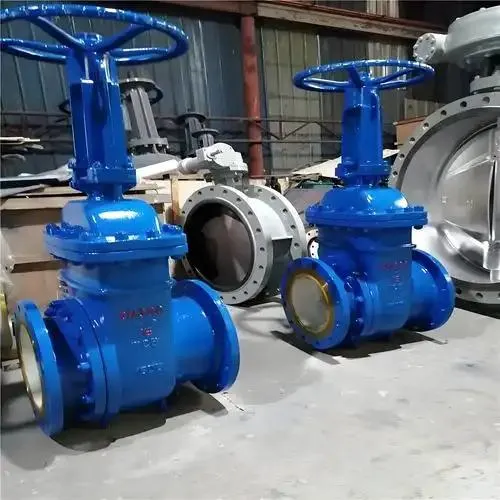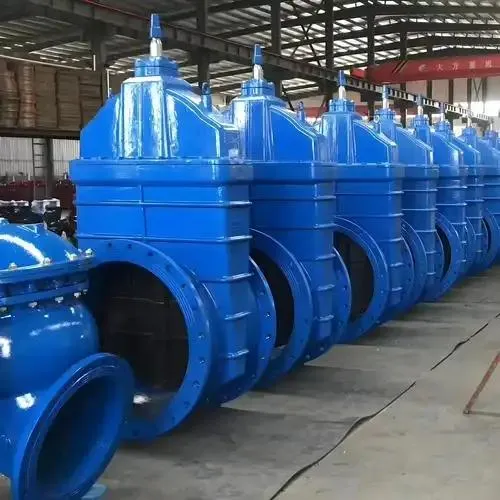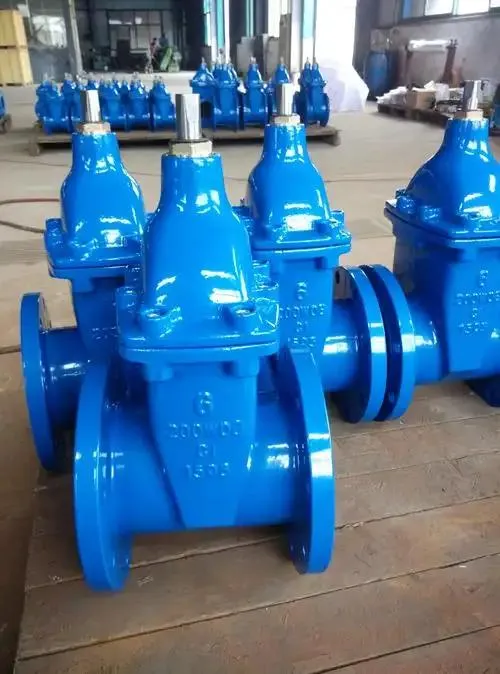जुन . 20, 2025 09:24 सूचीमा फर्कनुहोस्
Cost-Effective Selection Criteria for Globe Gate Valve Sizing
Selecting the right valve for industrial or commercial systems is critical to ensuring operational efficiency, safety, and cost-effectiveness. Among the myriad valve types available, globe gate valves stand out for their precision in flow control and durability. However, sizing these valves correctly requires a thorough understanding of system requirements, material compatibility, and cost considerations. This article explores four key valve categories—gate valve in plumbing, gate valves for water, globe gate valve, and knife gate valve—to provide actionable insights for optimizing valve selection. By aligning technical specifications with budgetary constraints, businesses can achieve long-term reliability without overspending.

Understanding the Role of Gate Valve in Plumbing in Modern Systems
Gate valves in plumbing are foundational components used to regulate fluid flow in pipelines. Their design, featuring a wedge-shaped gate that lifts vertically to open or close, makes them ideal for applications requiring full flow or complete shutoff. When sizing a gate valve in plumbing, consider the following:
1. Pipe Diameter and Pressure Ratings: Match the valve size to the pipeline’s inner diameter to prevent turbulence or pressure drops. For example, a 2-inch gate valve in plumbing suits residential water lines, while industrial systems may require larger sizes.
2. Material Compatibility: Brass or stainless steel gate valves are preferred in plumbing due to their corrosion resistance, especially in water or chemical environments.
3. Cost vs. Lifespan: While plastic valves are cheaper, metal variants offer longer service life, reducing replacement costs over time.
By prioritizing these factors, plumbers and engineers can avoid undersized or mismatched valves, ensuring seamless system performance.
Optimizing Gate Valves for Water Distribution Networks
Gate valves for water systems are engineered to handle high-volume flow with minimal resistance. Their robust construction makes them suitable for municipal water supply, irrigation, and firefighting systems. Key considerations for sizing include:
1. Flow Capacity: Calculate the maximum flow rate (in gallons per minute) to select a valve that avoids bottlenecks. For instance, a 6-inch gate valves for water can manage flows up to 1,200 GPM in large pipelines.
2. Operating Pressure: Ensure the valve’s pressure rating exceeds the system’s peak pressure to prevent leaks or bursts.
3. Environmental Factors: Outdoor installations demand UV-resistant coatings or frost-proof designs to withstand weather extremes.
Additionally, gate valves for water with non-rising stems are ideal for underground installations, as they occupy less vertical space.
Balancing Precision and Durability with Globe Gate Valve Designs
Globe gate valves combine the throttling capabilities of globe valves with the tight shutoff of gate valves, making them versatile for steam, oil, and gas applications. Sizing these valves involves:
1. Seat and Disc Geometry: The angled seat design enables precise flow adjustment, but requires careful calibration to avoid cavitation.
2. Temperature Tolerance: High-temperature systems (e.g., steam lines) need globe gate valves with forged steel bodies and graphite packing.
3. Maintenance Accessibility: Valves with removable bonnets simplify repairs, lowering lifecycle costs.
For cost-effectiveness, opt for globe gate valves with standardized flange dimensions to ensure compatibility with existing infrastructure.

Applications and Limitations of Knife Gate Valve in Industrial Settings
Knife gate valves excel in handling slurries, viscous fluids, and abrasive media due to their sharp-edged gate that cuts through thick materials. Key sizing criteria include:
1. Fluid Viscosity: Thicker fluids require larger valve openings and reinforced seats to prevent clogging.
2. Actuation Type: Manual knife gate valves are economical for low-frequency use, while automated versions suit high-cycle operations.
3. Installation Orientation: Horizontal mounting is preferred to ensure the gate’s blade aligns with flow direction, minimizing wear.
However, knife gate valves are less suited for high-pressure systems, as their lightweight design prioritizes flow clearance over pressure containment.
FAQs about Gate Valve Selection and Sizing
What factors determine the ideal size of a gate valve in plumbing?
The valve size depends on pipe diameter, flow rate, and pressure requirements. For residential systems, a ¾-inch to 2-inch gate valve in plumbing is typical, while industrial setups may need larger sizes.
How do gate valves for water differ from other valve types?
Gate valves for water feature a simple on/off mechanism with minimal pressure drop, unlike ball or butterfly valves, which are better for throttling.

Can a globe gate valve handle both liquids and gases?
Yes, globe gate valves are versatile and can regulate steam, oil, water, and gas flows, provided they are sized correctly for temperature and pressure.
What industries commonly use knife gate valve systems?
Knife gate valves are prevalent in mining, wastewater treatment, and pulp/paper industries, where slurries and heavy particulates are present.
Is maintenance costly for globe gate valve installations?
Routine maintenance costs are low if valves have accessible bonnets and durable seals. However, improper sizing can lead to frequent repairs.
Selecting the right valve—whether a gate valve in plumbing, gate valves for water, globe gate valve, or knife gate valve—requires balancing technical specifications with budgetary goals. By understanding each valve’s unique strengths and sizing requirements, businesses can optimize performance, reduce downtime, and achieve cost savings. Always consult engineering guidelines and prioritize valves designed for bulk industrial applications to ensure scalability and reliability.
-
Why Metric Trapezoidal Thread is Ideal for Precision Motion ControlसमाचारAug.05,2025
-
The Unique Properties of a Block of Granite for Industrial UseसमाचारAug.05,2025
-
The Role of Flanged Y Strainers in Preventing Pipeline ClogsसमाचारAug.05,2025
-
The Importance of Regular Calibration for Master Ring GagesसमाचारAug.05,2025
-
How a Cast Iron Surface Table Enhances Accuracy in ManufacturingसमाचारAug.05,2025
-
Comparing Different Check Valve Types for Optimal Flow ControlसमाचारAug.05,2025
सम्बन्धित उत्पादनहरु









